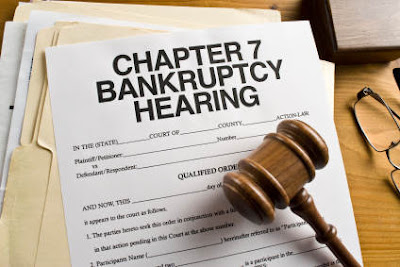 |
| Image Credit: Forbes.com |
At present, a lot of Americans are dealing with unemployment, and most of them do not have the capacity to pay off their loans. Day in and day out, people who are in serious debt are threatened with foreclosure and repossession. A way for these people to regain financial freedom is by filing for Chapter 7 bankruptcy.
What is Chapter 7 bankruptcy?
Chapter 7 bankruptcy is one of two bankruptcy processes that people can use to deal with creditors and get a fresh financial start. Also known as liquidation bankruptcy, Chapter 7 bankruptcy was named as such because the law is written on chapter 7 of the Federal Bankruptcy Code. In Chapter 7 bankruptcy, all debts (excluding child support, tax, and student loan debts) are cancelled, but most assets, excluding necessities, will be liquidated, i.e., sold off to pay creditors.
 |
| Image Credit: Bills.com |
However, not all people are eligible to apply for Chapter 7 bankruptcy. One of the ways to be eligible is by passing the means test, which determines if a person’s income is low enough for him or her to file for Chapter 7 bankruptcy. If a person’s income is less than the state median income for a household of a certain size, then he or she automatically passes the test.
 |
| Image Credit: HonJasLaw.com |
For more information, visit this website.
No comments:
Post a Comment